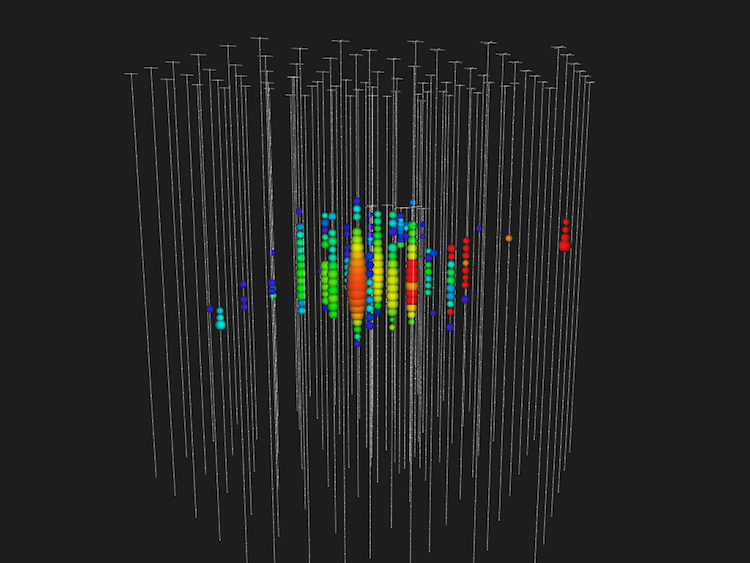How is it possible to distinguish a neutrino produced by the interaction of cosmic rays in the Earth’s atmosphere from an astrophysical neutrino when the particles themselves are identical? The idea is simple enough: atmospheric neutrinos are always produced together with other particles, including muons.
Stefan Schönert and others showed in 2009 how a muon produced in the same decay as a neutrino could be used to veto atmospheric neutrinos in underground detectors. This calculation applies to muon neutrinos, but not to electron neutrinos, which are accompanied by electrons rather than penetrating muons.
An extension of this idea, based on extrapolation of simulated cosmic-ray cascades, was used by IceCube to estimate the reduction of the atmospheric neutrino background in downgoing events in the analysis that led to the first evidence for astrophysical neutrinos. Now, a team of researchers at WIPAC and at University of Delaware presents an improvement of this technique that also uses muons produced in any branch of the same shower. This work has just been published in Physical Review D.

The researchers show that while using these secondary muons will only slightly improve the veto efficiency for muon neutrinos, this becomes the only way to veto atmospheric electron neutrinos. Atmospheric muon neutrinos are usually already vetoed in IceCube event selections since the accompanying muon, if properly identified, will always be labeled as background. The new analysis also applies to neutrinos from decay of charmed mesons, which may be an important component of the atmospheric background at energies around and above 10 TeV.
“This calculation doesn’t change the fraction of observable muon neutrinos very much, so as long as you’re only looking for track events, there’s nothing new here,” explains Jakob van Santen, a graduate student at WIPAC and corresponding author of this paper. “For searches that include cascade events, however, knowing how the vetoable fraction changes with neutrino flavor and production mechanism is the only way to distinguish moderately energetic astrophysical neutrinos from a larger-than-expected contribution from charmed meson decay in the atmosphere,” adds Jakob. And neutrino fluxes from charmed mesons may be the dominant background for any search of high energy astrophysical neutrinos.
+ Info “Generalized self-veto probability for atmospheric neutrinos,” Thomas K. Gaisser, Kyle Jero, Albrecht Karle and Jakob van Santen. Phys. Rev. D 90, 023009 (2014). DOI:10.1103/PhysRevD.90.023009
